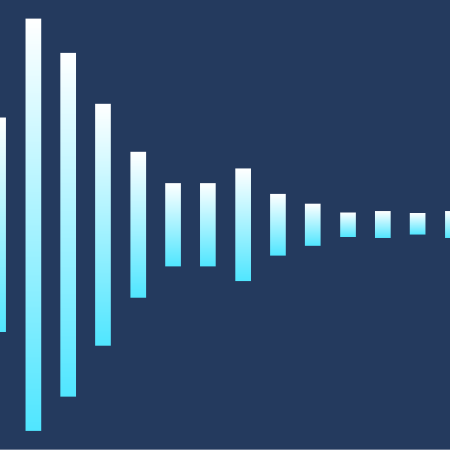Sound
Sound

Sounds are mechanical vibrations in an springy environment.
A human ear hears sounds distributed in the air - it feels air vibrations (air pressure changes). Thus, sounds are mechanical vibrations in an springy environment, which can be divided into:
• audible sound – vibrations with frequencies audible for the human ear, between 16 Hz and 20.000Hz (for example: for most musical instruments sounds are between 27.5Hz to 3000 Hz)
• ultrasounds - sounds of a frequency above the audible sounds frequency
• infrasounds – sounds of a frequency below the audible sounds frequency and are felt by a human as vibrations
● Sound power
A value which tells us how much energy in acoustic waves is emitted by a given source.
● Sound power level Lw
The sound power generated in HVAC installations is very low, it ranges from 0.0000001 W to 0.002 W, therefore due to practical reasons it is not specified in watts but with a ratio of sound power and a very low reference power: that is in the sound power level Lw:
Lw – Sound power level dB
P – sound power generated by the source (W)
P0 – reference power, that is the human auditory threshold, which
amounts to 10–12 (W).
Sound power level is a constant value and does not depend on the environment in which the source is located. Therefore, the sound power level is used for acoustic calculations.
Sound power level examples:
● Sound pressure level
The human ear receives the Sound power level in the form of air pressure changes, this value is called the Sound intensity level, however is most often presented in HVAC devices catalogues as the sound pressure level.
Lp – sound pressure level dB
P – periodical sound pressure (result of sound power impact)
P0 – sound pressure value, corresponding to the human auditory
threshold (it is 0.00002 Pa)
The sound pressure level (sound intensity level) is specified in dB (the unit is called a Bell (B) in the honour of an inventor Graham Bell, (dB=1/10B).
The bottom auditory threshold in the dB scale amounts to 0dB, the sound intensity of approx. 120-140dB is the upper threshold, referred to as the pain threshold.
The sound pressure level is dependent on:
1. Distance to the sound source
The farther from the source, the smaller the pressure level. An approximate loss in sound intensity can be calculated from a simplified formula:
ΔL – intensity level loss
R – distance from the noise source
Example:
Sound power of an external unit of the system VRF = 70dB
Distance to an external unit of the system VRF = 10m
Approximate loss of sound intensity ΔL = 20 log 10 + 14 = 34dB
Sound intensity of an external unit of the system VRF = 70dB – 34dB = 36dB
2. Space surrounding the sound source
If it shall be enclosed space, e.g. an engine room, the walls shall reflect the sound waves, in such a case the sound intensity might even increase in relation to the specified value. Therefore, the sound pressure level (sound intensity) in catalogues is always specified in a specific distance from the sound source and in specific “virtual” space.
● Sound level - dB(A)
Due to its structure, the human ear is not equally sensitive to various sound frequencies. The most perceived are frequencies at a level of 4000Hz. Frequencies at a level of 16-20Hz are practically non-audible.
As result of long-term research, corrective filters have been developed, which allow for mathematical transfer of the human ear’s perception. In HVAC systems, a filter named “A” was adopted - the most similar to the human ear’s perception, and the measurement unit is (dBA):
This assumes that the sound power level corrected by the “A” filter curve is called the Sound level (also noise level).
● Calculation of the noise level for various sources
Noise level from various sources can be calculated depending on:
L(sum) – total noise level
L(max) – noise level of the loudest source
K – corrective factor depends on difference in noise of two sources Δ (dB)
L(max) – noise level of the loudest source
L(min) – noise level of the most quiet source
Dependence of the corrective factor K on Δ specified in the table:
total noise level equals to: L(sum) = L(max)+K
If there are two noise sources of a difference of more than 10dB, the total noise level is adopted as for the loudest source.
If the project includes three or more noise levels, the calculations are conducted in pairs, from the lowest noise level to the highest.
Example 1.
The project includes two noise sources adjacent to one another, one has a level of 70dB, while the other has 65dB
Δ = 70 - 65 = 5dB, corrective factor K (from the table) = 1.2dB
The total noise level of those two sources shall amount to L(sum) = 70 + 1.2 = 71.2dB
Example 2.
The project includes three noise sources adjacent to one another, one has a level of 64dB, while the other has 70dB and the third one 75dB
For the purpose of calculations, we take the first pair with the lowest noise level:
Δ1 = 70 - 64 = 6dB, corrective factor K (from the table) = 1dB
The total noise level of the first pair shall amount to L(sum) = 70 + 1 = 71dB
For the next pair we use the noise level from the previous calculation:
Δ2 = 75 - 71 = 4dB, corrective factor K (from the table) = 1.5dB
The total noise level of these sources shall amount to L(sum) = 75 + 1.5 = 76.5dB
● Recommended maximal noise level for rooms